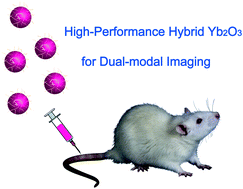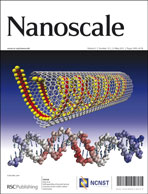Novel nanoparticulate contrast agents with low systemic toxicity and inexpensive character have exhibited more advantages over routinely used small molecular contrast agents for the diagnosis and prognosis of disease. Herein, we designed and synthesized PEGylated hybrid ytterbia nanoparticles as high-performance nanoprobes for X-ray computed tomography (CT) imaging and magnetic resonance (MR) imaging both in vitro and in vivo. These well-defined nanoparticles were facile to prepare and cost-effective, meeting the criteria as a biomedical material. Compared with routinely used Iobitridol in clinic, our PEG-Yb2O3:Gd nanoparticles could provide much significantly enhanced contrast upon various clinical voltages ranging from 80 kVp to 140 kVp owing to the high atomic number and well-positioned K-edge energy of ytterbium. By the doping of gadolinium, our nanoparticulate contrast agent could perform perfect MR imaging simultaneously, revealing similar organ enrichment and bio-distribution with the CT imaging results. The super improvement in imaging efficiency was mainly attributed to the high content of Yb and Gd in a single nanoparticle, thus making these nanoparticles suitable for dual-modal diagnostic imaging with a low single-injection dose. In addition, detailed toxicological study in vitro and in vivo indicated that uniformly sized PEG-Yb2O3:Gd nanoparticles possessed excellent biocompatibility and revealed overall safety.

You have access to this article
 Please wait while we load your content...
Something went wrong. Try again?
Please wait while we load your content...
Something went wrong. Try again?


 Please wait while we load your content...
Please wait while we load your content...